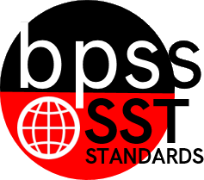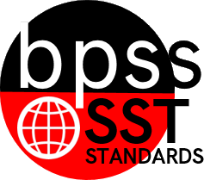SST-08.2.07
|
8th Grade SST Targeted Benchmarks
Standard 2: History
SST-08.2.07 Explain the course and consequences of the Civil War (e.g., contributions of key individuals, key battles, The Emancipation Proclamation).
Five Big Ideas:
- Leadership and Strategies
- Gettysburg Address
- Emancipation Proclamation
- States’ Rights vs. Upholding the Constitution
- Cost of Civil War
|
Student Learning Targets:
Knowledge Targets
- I can recognize or recall specific terminology, such as:
- Confederate, Union, Ironclad, Red Cross, Copperheads, Habeas Corpus, Contrabands, Cotton Diplomacy, Total War, Anaconda Plan, Border States
- Battles of the Civil War
- Chandellorsville, Gettysburg, Vicksburg, 1st Bull Run, 2nd Bull Run, Antietam, Shiloh, Merrimack v. Monitor, Fort Sumter, Appomattox, Sherman's March to the Sea, Wilderness Campaign, 7 days Battle
Reasoning Targets
Skills (Performance) Targets
- I can demonstrate extended knowledge and understanding by independently and consistently connecting this standard to real world situations.
Proficiency Scale
| Score |
|
Description |
Sample Activity
|
| 4.0 |
In addition to Score 3.0, the student demonstrates in-depth inferences and applications regarding more complex material that go beyond end of instruction expectations.
The student:
- demonstrates extended knowledge and understanding independently and consistently by connecting to historical and/or current situations.
|
- |
| |
3.5 |
In addition to Score 3.0 performance, the student demonstrates in-depth inferences and applications regarding the more complex content with partial success. |
| 3.0 |
“The Standard.” The student demonstrates no major errors or omissions regarding any of the information and processes that were end of instruction expectations.
The student can:
- explain the 3-part strategy set out by the Union to win the war. (What battles supported their plan?)
- explain Lincoln’s decisions and actions to end slavery.
- list the major battles of the Civil War and determine their significance.
- distinguish the Civil War's influential people, such as:
- Lincoln, Davis, Grant, Lee, McClellan, Sherman, Jackson, Pickett, Scott, Farragut, Clara Barton
- compare and contrast the Civil War strategies between McClellan and Sherman.
- compare and contrast the north and the south during the war.
- describe the high cost of the Civil War in terms of people, family, and money. (Total War)
|
- Students will list the three main goals for the Union at the beginning of the Civil War.
-Students will complete a chart summarizing the main battles.
-Students will complete a chart comparing the north and south in terms of population, industrial advancements, environment, resources, and military leadership.
-Students will empathize and describe the effect of Total War on their life.
|
| |
2.5 |
The student demonstrates no major errors or omissions regarding the simpler details and processes (Score 2.0 content) and partial knowledge of the more complex ideas and processes (Score 3.0 content). |
| 2.0 |
The student demonstrates no major errors or omissions regarding the simpler details and processes but exhibits major errors or omissions regarding the more complex ideas and processes (Score 3.0 content).
There are no major errors or omissions regarding the simpler details and processes as the student:
- recognizes or recalls specific terminology, such as:
- Confederate, Union, Ironclad, Red Cross, Copperheads, Habeas Corpus, Contrabands, Cotton Diplomacy, Total War, Anaconda Plan, Border States
- Battles of the Civil War
- Chancellorsville, Gettysburg, Vicksburg, 1st Bull Run, 2nd Bull Run, Antietam, Shiloh, Merrimack v. Monitor, Fort Sumter, Appomattox, Sherman's March to the Sea, Wilderness Campaign, 7 Days Battle
However, the student exhibits major errors or omissions regarding the more complex ideas and processes.
|
- |
| |
1.5 |
The student demonstrates partial knowledge of the simpler details and processes (Score 2.0 content) but exhibits major errors or omissions regarding the more complex ideas and procedures (Score 3.0 content). |
| 1.0 |
With help, the student demonstrates a partial understanding of some of the simpler details and processes (Score 2.0 content) and some of the more complex ideas and processes (Score 3.0 content). |
- |
| |
0.5 |
With help, the student demonstrates a partial understanding of some of the simpler details and processes (Score 2.0 content) but not the more complex ideas and processes (Score 3.0 content). |
Resources
Websites
- www.historychannel.com
- www.biography.com
- "Glory" (Edited Copy)
- "Lincoln"
Vocabulary |
 BPS District Social Studies Standards Book
BPS District Social Studies Standards Book

 Standard 2:
Standard 2: